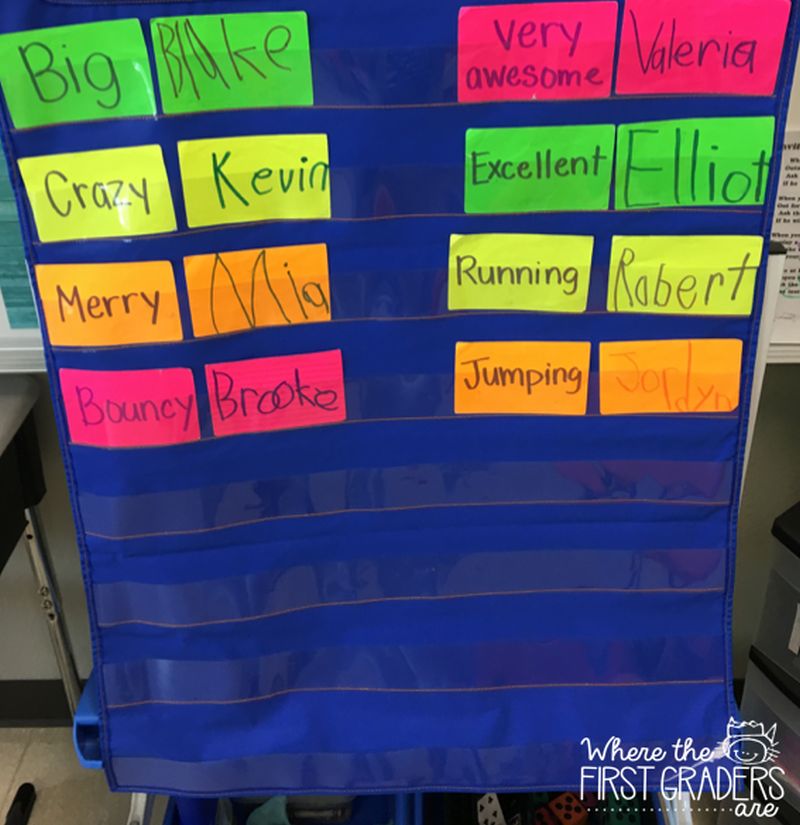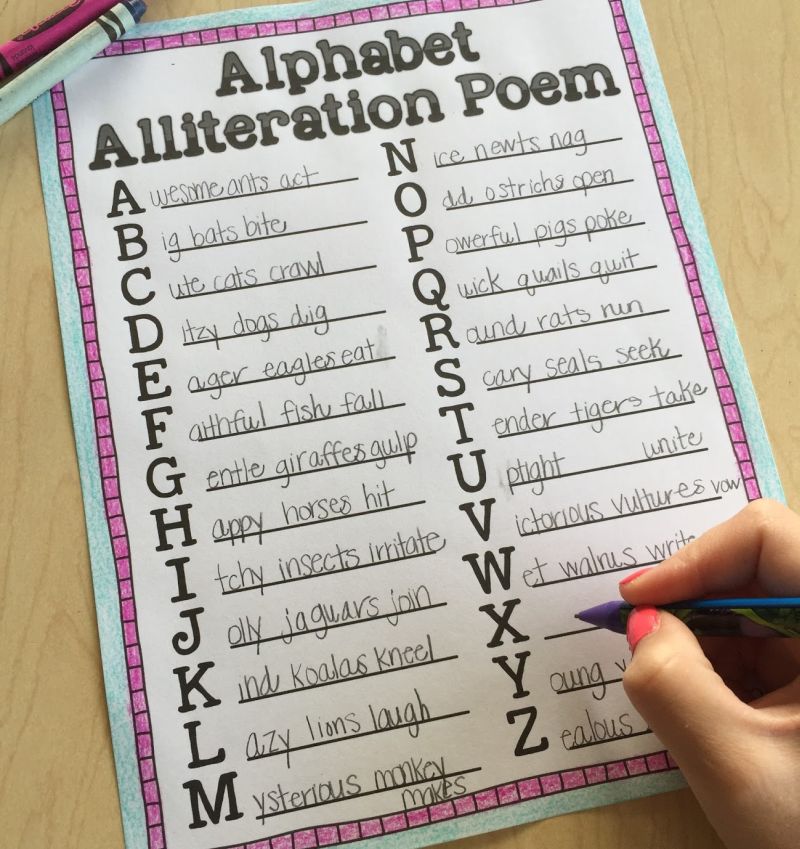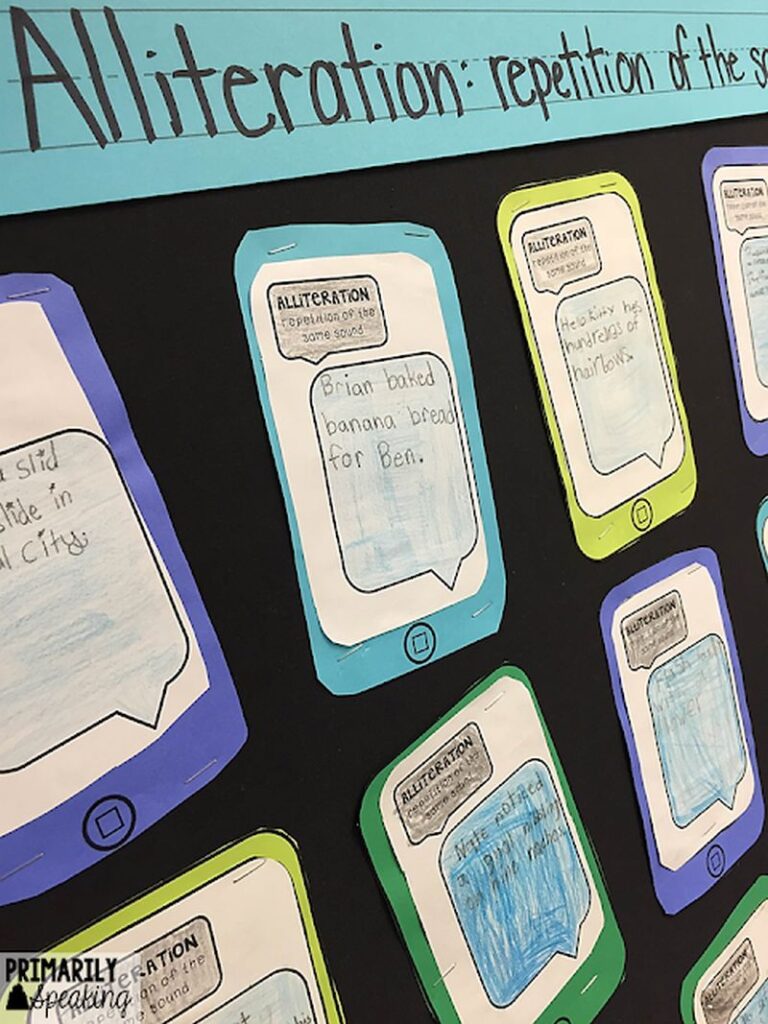When you want to win over readers with winning words, turn to alliteration! This literary device is fun to use and to read. Discover why writers use it, plus find lots of helpful alliteration examples and ideas for teaching this concept.
What is alliteration?
Alliteration is a literary device in which two or more words use the same initial sound. These words may be directly next to each other or very close by. It’s important to note that alliteration doesn’t refer to the first letter of a word, but instead to the sound it makes. So, words that start with different letters can still be alliterative.
Example: Carl and Katy cooked a kimchi casserole for Kerri.
Alliterative initial sounds also include letter blends, as in the following sentences:
Example: Stay strong, Steve! Stop stalling and study!
On the other hand, words that start with the same letter may not be alliterative, depending on how they’re pronounced.
Example: Chocolate cookies are certainly crave-worthy.
This sentence has four words starting with the letter “c,” but each actually has a different beginning sound: /ch/, /c/, /s/, and /cr/. So while it might look like alliteration at first glance, it’s actually not.
Alliteration, Assonance, and Consonance
Alliteration specifically refers to sounds at the beginning of words. Two other literary devices, assonance and consonance, are similar but not quite the same.
- Consonance is the repeated use of consonant sounds in the middle or end of words: “Jackie likes hiking and kicking a soccer ball.”
- In assonance, the vowel sounds in the middle or end of words are the same: “We see three trees.”
Learn more about assonance, alliteration, and consonance here.
Importance of Alliteration
Like other literary devices, alliteration helps set a mood or tone when used properly. It’s very common in poetry, where it works together with rhyme and rhythm to emphasize the musical qualities of language. Alliteration often adds emphasis, since the repetition of sounds draws attention to the words. It can help writing flow more smoothly, or add a choppy rhythm that evokes sounds or actions.
Alliteration can also add a playful sense to your writing. Many funny poems and other compositions make liberal use of alliteration. You’ll also find this device in tongue-twisters (which also often use consonance and assonance). Well-used alliteration can be witty and clever, although using it too frequently can water down its effect.
Discover more about using alliteration in your writing here.
Short Alliteration Examples

- Angry ants
- An army of alert alligators
- Brilliant brains
- Big bold bears battle buzzing bees
- Crazy critters
- Chocolate chip cheesecake
- Dig deep down
- Dastardly dragons damaged Dora’s dignity
- Excellent eggs
- Enrique enjoys entertaining
- Fifty-five fifes
- Fleeing fleas flit fleetly
- Giggling ghosts
- Grow great green grapes
- Happy hearts
- Hopping Javier hurt his hip
- Icy islands
- International investigations interfere inexplicably
- Jolly jokers
- Jane joyfully joined jumping jackrabbits
- Kicking kangaroo
- Kind kids kiss kittens
- Little leaves
- Likeable Lily loves laughing
- Mean monsters
- Many merry monkeys make messy mistakes
- New notebook
- Ninety-nine nuns knit knight’s knee-socks
- Observant owls
- Owen obeyed Omar’s orders
- Playful puppies
- Princess Priscilla proceeded properly
- Quick question
- Qualified queens question quizzically
- Red roses
- Restless Raoul ran recklessly
- Strong straps
- Siri sold six silk saris
- Twenty twigs
- Thus they thought themselves through
- Unique ukulele
- Uncle Ulric understands ulcers
- Victorious Vikings
- Victor values valiant ventures
- White winter
- Wen went walking with Willa
- Yellow yolk
- You used young yeast
- Zany zebra
- Zealous Zayn zooms zestfully
Alliteration Examples From Poetry
- “Tyger Tyger, burning bright” (The Tyger by William Blake)
- “To feast his fill of the flesh of men.” (Beowulf)
- “While I nodded, nearly napping” (The Raven by Edgar Allan Poe)
- “Behemoth, biggest born of earth” (Paradise Lost by John Milton)
- “Beauty’s effect with beauty were bereft” (Sonnet #5 by William Shakespeare)
- “A parakeet of parakeets prevails” (The Bird With the Coppery, Keen Claws by Wallace Stevens)
- “We would sit down, and think which way / To walk, and pass our long love’s day.” (To His Coy Mistress, by Andrew Marvell)
- “One short sleepe past, wee wake eternally” (Death, be not proud by John Donne)
- “Warm lip to lip and limb to limb” (Dawn by Ella Wheeler Wilcox)
- “And the sheen of their spears was like stars on the sea” (The Destruction of Sennacherib by Lord Byron)
Alliteration Examples From Song Lyrics

- “Whisper words of wisdom” (Let It Be by The Beatles)
- “They paved paradise and put up a parking lot” (Big Yellow Taxi by Joni Mitchell)
- “Said I’m so sick of love songs, so sad and slow” (So Sick by Ne-Yo)
- “I’ve been a puppet, a pauper, a pirate, a poet, a pawn, and a king” (That’s Life by Dean Kay and Kelly Gordon)
- “The savage soldier sticks his head in sand” (Gates of Eden by Bob Dylan)
- “There a stranger strives solitary” (There’s a Rugged Road by Judee Sill)
- “And, baby, now we’ve got bad blood” (Bad Blood, Taylor Swift)
- “I got bitten by the bitter bug” (Second Time Around, Indigo Girls)
- “So meet me at the mission at midnight” (Banditos by The Refreshments)
- “How can I hurt when holding you?” (Sweet Caroline by Neil Diamond)
Funny Alliteration Examples
- Peter Piper picked a peck of pickled peppers,
A peck of pickled peppers Peter Piper picked.
If Peter Piper picked a peck of pickled peppers,
Where’s the peck of pickled peppers Peter Piper picked? - Way down in the jungle where nobody goes, there’s a wishy-washy washer woman washing her clothes.
- She sells seashells by the seashore. The shells she sells are surely seashells. So if she sells shells on the seashore, I’m sure she sells seashore shells.
- Many mumbling mice, making mighty music in the moonlight mighty nice.
- Betty Botter bought a bit of butter. “But,” she said, “the butter’s bitter. If I put it in my batter, it will make my batter bitter. But, a bit of better butter will make my batter better.” So, she bought a bit of butter, better than her bitter butter. And she put it in her batter. And the batter was not bitter.
How To Teach Alliteration
This is usually a really fun topic to share with students, as it encourages all sorts of creativity. Here are some creative, teacher-proven ways to teach alliteration.
Give kids alliterative nicknames

The personal touch really makes this alliteration lesson stick! After you and your class come up with alliterative nicknames for each student, turn this activity into a station for kids to re-do all year long.
Learn more: Kristen Sullins Teaching
Create alliterative poems

Choose a subject, then write an alliterative phrase for each letter of the alphabet. Keep it simple with just a subject and a verb for each, or differentiate the difficulty by adding adjectives and adverbs.
Learn more: Teaching With Terhune
Craft alliterative texts

Middle schoolers will love this activity, even if they don’t have their own phones yet. Try this with the text you’re currently reading and ask students to send an alliterative text from one character to another.
Learn more: Primarily Speaking

